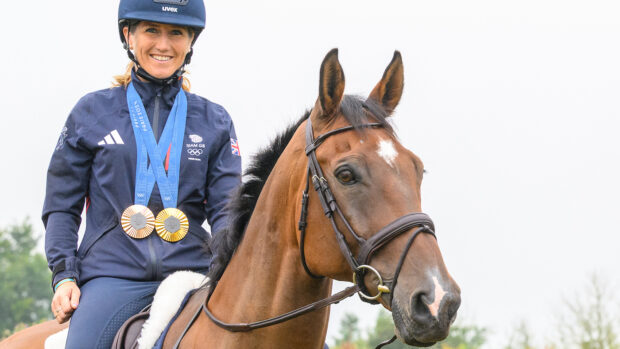Do you know what your three jobs are as a cross-country rider and how to train your horse to safely get to the other side of every fence? According to six-time Badminton winner Lucinda Green, there is a science to achieving this and it has to be learned, perfected and continually practised.
1. Remember the three ‘Fs’
Focus
There are three ingredients for focusing a horse so that he sees a fence and reads it correctly — your eyes, hands and legs.
“A lot of riders don’t think eyes, but eyes are for intention and I was always taught that if you don’t have intention, don’t bother to ride,” says Lucinda. “I find it helps to imagine there is an invisible wire linking my horse’s eyes to my calves so that we’re focusing together.”
Footwork
“If a horse has agile footwork in front of a fence, he is much less likely to fall. It’s good for horses to have to think for themselves,” adds Lucinda.
Fun
“It’s not fun if a horse doesn’t want to jump a fence and you have to ask yourself why — does he lack confidence or is he naughty?”
2. Learn the three ‘Fs’ at home
When teaching, Lucinda uses a course of five narrow 4ft poles that are no more than 2ft high. Jump them in trot and halt for 10 seconds after clearing the last.
“There are two rules: no running out and no cantering because that will be too fast for the horse to see the jump,” says Lucinda. “It doesn’t matter if they knock it down, but if they stop don’t turn away. The fences are small enough to walk over.”
Looking ahead to the next fence is important.
“Look where you want to go before making the turn so that you give your horse intention. If you’re not focusing, how can he?”
This exercise is a good way to see how both horse and rider cope under pressure and in a tight space.
“Cross-country isn’t just about big galloping fences — there are combinations that require a more controlled pace and a horse that pays attention,” adds Lucinda.
3. Aim for the feeling of putting your horse in a tube of your legs
“It’s not a constant grind, just a connection — your hands guide and legs steer while your eyes focus. Think of it as a cuddle, not a severe squeeze,” explains Lucinda.
Like this? You might also enjoy reading these:
A fascination with criminal psychology — and other things didn’t know about Lissa Green
3 exercises to spice up your training at home
4. A good cross-country rider has three jobs to do. The easiest way to remember is by an acronym — ELBOW
E is for engine
L is for line
B is for balance
OW if you forget one of the above
“About 200 yards out from a fence I start to change the balance and the speed, put my horse in the tube and really focus his eyes. Once I’ve done my three jobs it is up to him to jump the fence,” says Lucinda.




